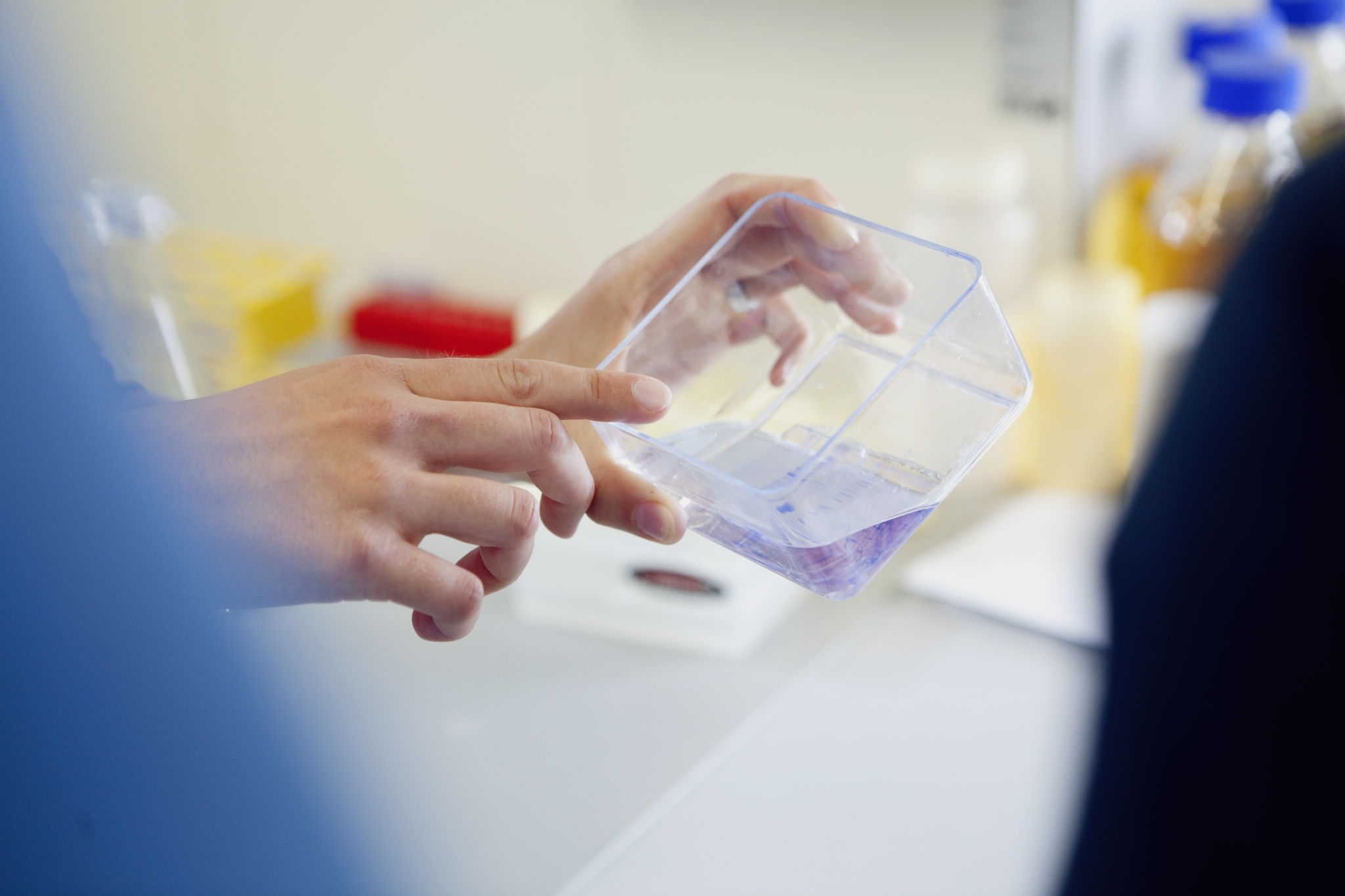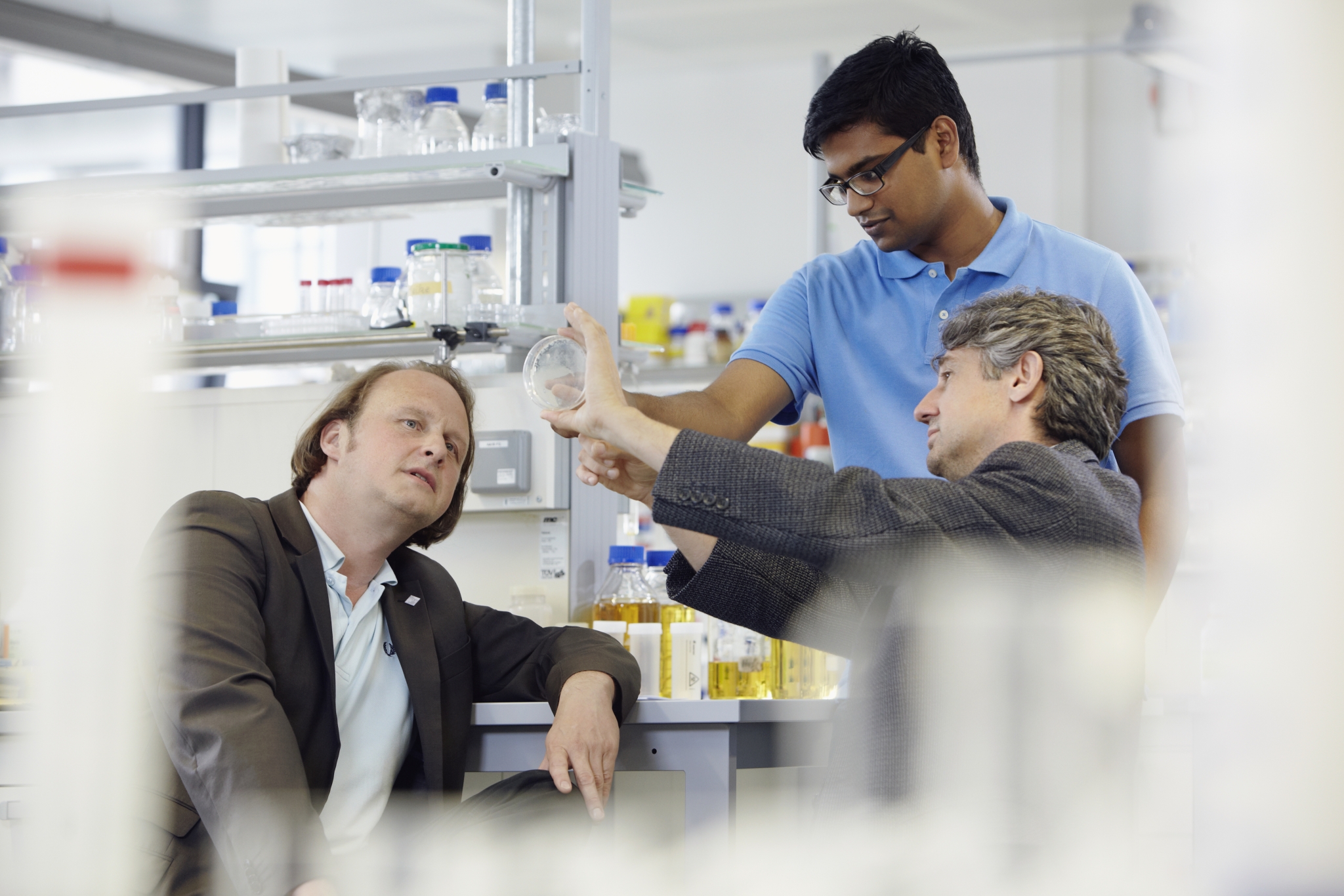Chemical tools for biological applications
The boundaries between traditional scientific disciplines are becoming less and less distinct. Interdisciplinary cooperation is often required to study complex processes and biomolecular issues. Interdisciplinary cooperation is central to chemical biology, a scientific discipline that applies chemical substances, methods and tools to the study of biological systems ranging from the chemical synthesis of biologically active substances to the specific chemical modification of biomolecules.
The holistic approach of chemical biology gives rise to new approaches for manipulating and studying biological processes at the chemical level in the field of basic research. Chemical biology studies often involve low-molecular weight compounds, so-called “small molecules”, that have been designed using synthetic chemistry methods and tools or identified via biochemical and cell-based screening of large molecule databases.
These molecular tools can have a variety of effects on cells and proteins; for example, they can bind specifically to active proteins and thus show what they do, alter the chemical properties of a protein or visualise its location in the cell. Small molecules can be used in vitro and in vivo, and are primarily characterised by their rapid and often reversible effect, which makes the lengthy preparation of RNAi and other molecules or the genetic manipulation of cells superfluous (see article entitled “Chemical tools for exploring cell division”).
Pharmaceutical companies are of course extremely interested in functional molecules of this kind. A compound that basic researchers have identified as an inhibitor of a certain cell division protein could have the potential to be used as a cancer drug when the protein in question turns out to be involved in tumorigenesis. The discipline is therefore also of huge economic importance.
Made-to-measure protein building blocks

So-called non-natural or artificial amino acids are also popular chemical biology tools. In contrast to the 20 canonical amino acids that are the building blocks for the ribosomal biosynthesis of proteins of virtually all organisms, non-natural amino acids are synthesised in the laboratory rather than found in nature. They can be equipped with specific chemical functions, including fluorescent labels or functional side chains that can be used to connect them to other molecules. They are therefore a kind of universal protein-engineering tool that can be used to change or improve the existing properties of a protein or add completely new functions (see article entitled “Marina Rubini – a passionate researcher into protein folding and design”).
Most artificial amino acids are produced with bacteria. However, as there are no natural base triplets that code for non-natural amino acids, the bacteria's genetic code must first be expanded so that the bacteria can use them as part of their natural protein biosynthesis processes. This can be achieved by specifically suppressing a stop codon in the mRNA, so that a stop codon base triplet leads to the incorporation of a specific amino acid rather than terminates the translation process, which is what it normally does.
To do this, the bacteria also need: 1) specific transfer RNAs (tRNAs) that mediate the integration of a specific non-canonical amino acid into the growing amino acid chain at the ribosome and 2) specific aminoacyl tRNA synthetases that load the tRNAs with non-canonical amino acids. The introduction of specific DNA sequence mutations in the DNA creates stop codons at defined sites of the sequence, thus enabling the site-specific incorporation of a non-canonical amino acid (see article entitled “Red light to elucidate the regulatory mechanisms of gene expression”).
Targeted enzyme design creates new tools for application in biotechnology

Enzymes have become integral constituents of many laboratory applications and biotechnological methods because they catalyse specific chemical reactions in biological systems and in test tubes. Standard molecular biology methods such as PCR (polymerase chain reaction), cloning or the production of recombinant proteins are just three examples of the wide range of potential applications.
Theoretical application possibilities are extremely varied, but in the past they tended to be limited by the natural variation of enzymes, which only work under the right environmental conditions, e.g. at a specific temperature or for a specific substrate.
“Nature has not evolved polymerases for modern molecular diagnostics applications,” says Andreas Marx, professor of organic chemistry/cellular chemistry and coordinator of the Graduate School Chemical Biology at the University of Konstanz (see article entitled “Andreas Marx – “Chemical Biology” of DNA polymerases”).
However, the combination of molecular biology and chemistry tools has now made it possible to develop new enzymes with new functions in the laboratory. Mutagenesis, selection and molecular modelling make it possible to develop new enzymes for novel applications that facilitate complex synthesis processes in the laboratory, to name but one example (see article entitled “From structure to mechanism”).